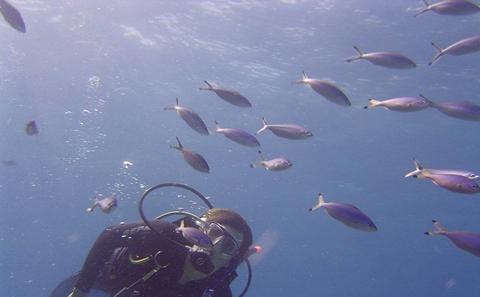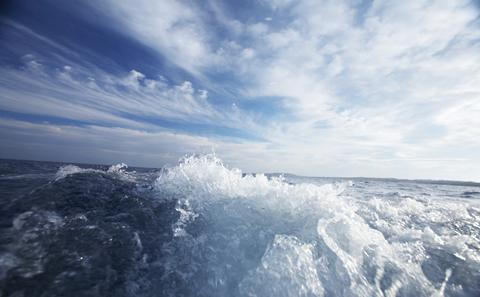Conserving coral reefs
Saving the ocean’s coral reefs and the communities that treasure them
It is the idyllic scene that would be used to sell any tropical holiday: brightly-coloured fish darting in and out of equally vivid coral reefs in turquoise seas.
But along with their undeniable aesthetic appeal, corals hold a much greater significance to the global community. So much so, that news of possible irreparable damage to the Great Barrier Reef is a development that could well have international impact.
Research happening at the University of Southampton is at the forefront of the field that tries to reverse the declining health of our corals and, in turn, conserve species that supports the livelihoods a half a billion people around the world.
Some African coastal countries including Kenya and Mozambique depend strongly on coral reefs. If the reefs are lost it will increase poverty in those communities which would have an impact also on other parts of the world
Coral and industry
Leading that work is Jörg Wiedenmann, Professor of Biological Oceanography and Head of the Coral Reef Laboratory. Jörg says: “Coral reefs are potential treasure troves for biomedical pharmaceuticals. A number of drugs have been isolated from reef organisms like a novel pain killer and a number of compounds with anti-tumour activity. Novel Imaging tools have been developed from fluorescent coral pigments that have significantly accelerated biomedical research.
“Around half a billion humans depend on coral reefs not only in tourism and fishery business terms but also regarding coastal protection since they can prevent coastal erosion especially in low level countries.
“Some African coastal countries including Kenya and Mozambique depend strongly on coral reefs. If the reefs are lost it will increase poverty in those communities which would have an impact also on other parts of the world,” he adds.
Irregularities in coral bleaching
While climate change is recognised as one of the primary factors in affecting the health of corals –warmer conditions can cause the infamous “coral bleaching” – Jörg and his team have been studying why some corals appear to be more adversely affected by changes in the sea temperature than others.
He says: “We are looking at the effects of nutrient enrichment, or the quality of the sea water, on coral physiology. Unfavourable nutrient conditions render corals more susceptible to heat stress so that means they start bleaching at lower temperatures than they would do on a regular basis. Conversely, if the nutrient concentration in the water are favourable then they can tolerate more heat stress.
“For example, coral bleaching tends to be quite patchy and this is where our research is directly useful because can help to explain the differences in the susceptibility to heat stress.
“Whilst climate change is an issue that must be addressed both on the regional and global scale, water quality is something that can be managed locally and is something that countries with coral reefs have in their own hands.”
We have an extremely interdisciplinary approach to our research. For example our work with the Mass Spectrometry Facility at Southampton General Hospital means we can analyse corals using technology that is usually applied mostly medical research.
Using cross-disciplinary facilities
Some of the discoveries made in Southampton are already being communicated to policy makers involved in reef management. These insights have been possible thanks to the unique facilities at the University of Southampton.
Using the coral aquarium, academics and students are able to experiment with corals in a laboratory environment under controlled condition in the proximity of the advanced technological infrastructure of the wider University.
“This gives us a highly competitive edge,” explains Jörg. “We have an extremely interdisciplinary approach to our research. For example our work with the Mass Spectrometry Facility at Southampton General Hospital means we can analyse corals using technology that is usually applied mostly medical research. Our collaboration with the Nuclear Magnetic Resonance facility is also something very unique.”
Due to the fully established coral aquarium facility, Southampton is among a few places in the world where these animals can be kept and studied over a long period of time in a controlled laboratory environment.
Jörg says: “That is important if you want to understand how corals function and interact with their environment and how they respond to stress. We can simulate complex conditions over long time and we don’t need to worry that a tropical cyclone might blow our experiment away.
“Students gain unique opportunities from the access to these facilities, as they can manipulate conditions and measure the outcomes over the course of their project.”
Along with a recently published paper on fluorescent corals, the work of Jörg and his colleague Cecilia D’Angelo, Senior Research Fellow at the Coral Reef Laboratory, on this topic won a place at this year’s Royal Society Summer Science Exhibition, the most prestigious event of its kind in the UK.
The “Glowing Corals” exhibit attracted global interest and further underlined Southampton’s world leading research in the field.
Related Staff Member
You may also be interested in:

Exploring unchartered waters
Discovering deep-sea volcanic vents and the marine life they support

Future-proofing our oceans
Conserving ocean spaces and developing the ships and naval vessels of the future
